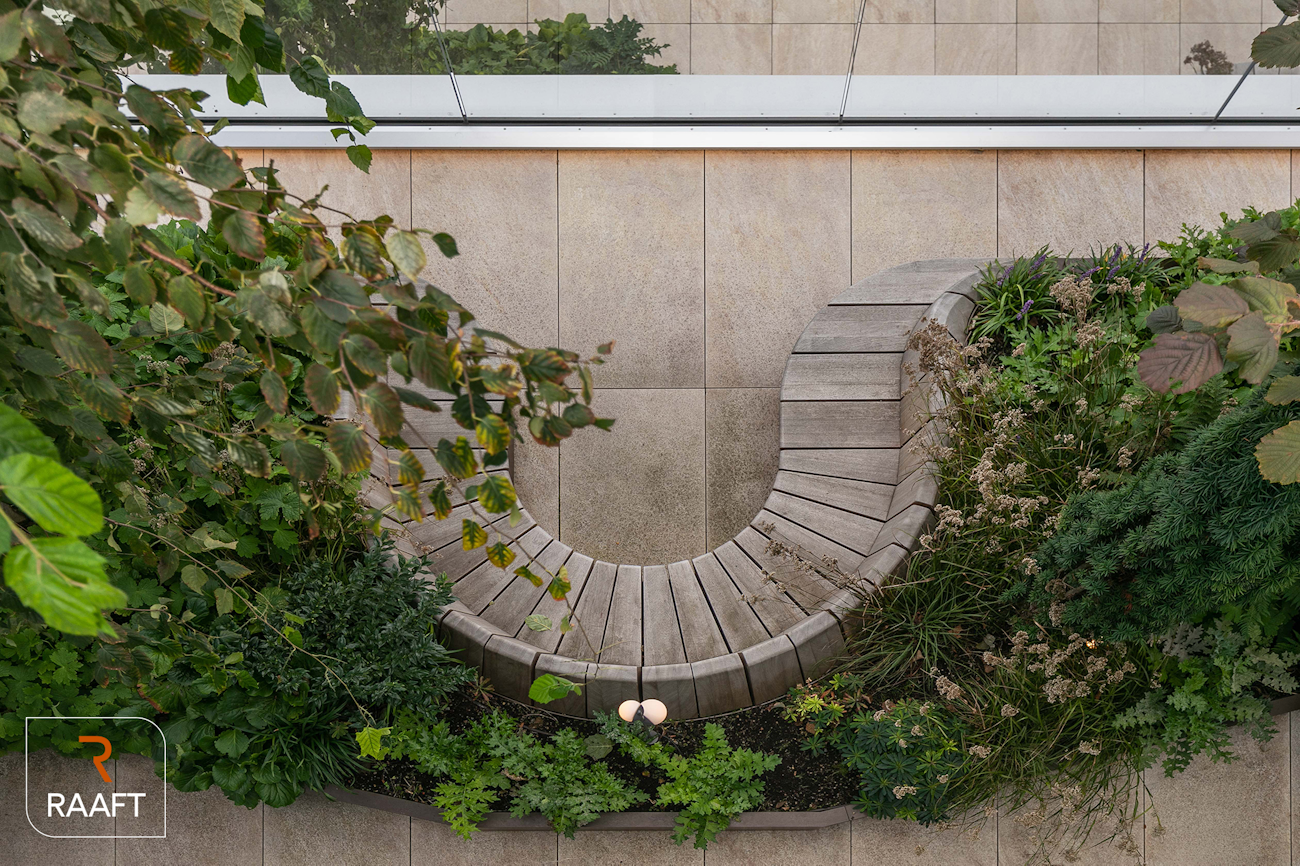Enhance roof terraces and city life with biophilic design.
_2000(H)_voopz.jpg?w=1300&q=90&auto=format&fit=crop&crop=edges,focalpoint&fm=png)
Enhance roof terraces and city life with biophilic design.
Getting close to nature is one of the joys of landscaping - for designers and clients alike. We all know a green, outdoor setting lifts the spirits, promotes wellbeing, and provides a constant source of pleasure and inspiration.
In our increasingly urban world, fewer and fewer people have much daily connection with greenery or natural water.
That’s why rooftop terraces are such a vital and popular aspect of modern inner-city living and have such an important environmental role to play.
Up high above the streets, terraces offer so many opportunities to combine features of light, air, water, and plant life. And given the technology and systems available, great terraces have never been easier to create. Sophisticated systems for decking and planters can combine to produce spectacular and environmentally beneficial results.
To take these connections to the natural world further, some landscape architects are now exploring the principles of biophilic design, a relatively new school of thought which stresses people’s innate and deep-seated need to incorporate nature into modern environments. One of the best examples of biophilic design is the High Line in New York, a former train line that has been converted to a park teeming with plants, shrubs, and various forms of vegetation.
The biophilic movement originated in the States just over a decade ago, driven by the Living Building Challenge, a green building design and certification program. Although initially focusing on interior design, it quickly embraced landscape design too.
Biophilic landscaping has many strands but essentially the designer is encouraged to mimic nature. This means making as much use as possible of light, air, water, plants and providing natural landscapes and ecosystems that can support animal life.

Raaft's range of planter systems and products are ideally suited to help landscapers achieve these biophilic effects. Raaft planters and benches accommodate multiple forms of plant life and vegetation, perfect for mimicking nature.
Corten weathering steel, which is often included in Raaft projects, is also great for blending well with outdoor designs. It’s bang on the money too with biophilic design philosophy, which likes to incorporate into landscape design things that age, change and acquire what theorists call the patina of time.
Corten certainly ticks those boxes, whether it’s used for bordering, retaining walls and raised flowerbeds, or a whole range of water features. And as CorTen absorbs high levels of Co2, there are verifiable environmental benefits too.
_jzjfy.jpg?w=1300&h=&q=90&auto=format&fit=crop&crop=edges,focalpoint&fm=png)